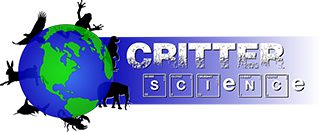- Zoology
- Daily Critter Facts
- For Teachers
- Study Guides
- Diseases & Parasites
- Contact


Evolution, at its core, is the process by which populations of organisms change over generations. These changes arise from alterations in the heritable traits of those populations. It’s not about individual organisms transforming within their lifetimes, but about the shifting frequencies of different versions of genes, or alleles, across a population. This gradual accumulation of heritable variations drives the incredible diversity of life we observe today.
At Its Core
The primary mechanism driving evolution is natural selection. This process hinges on the concept of differential reproductive success. Organisms with traits that better equip them for their environment are more likely to survive, reproduce, and pass those advantageous traits onto their offspring. Conversely, individuals with less favorable traits are more likely to perish or produce fewer offspring, reducing the prevalence of those traits in subsequent generations.
Genetic variation is the raw material upon which natural selection acts. These variations arise primarily through random mutations in DNA. Mutations can be beneficial, harmful, or neutral. Beneficial mutations, while rare, can provide a selective advantage, increasing an organism’s chances of survival and reproduction. Neutral mutations, on the other hand, have no immediate effect on fitness and may accumulate over time. Harmful mutations typically decrease fitness and are often eliminated by natural selection.
There’s more to it than just Natural Selection
Beyond natural selection, other evolutionary forces contribute to the shaping of populations. Genetic drift, for instance, is the random fluctuation of allele frequencies due to chance events, particularly in small populations. This can lead to the loss of some alleles and the fixation of others, even if they are not particularly useful. Gene flow, or migration, involves the movement of genes between populations, which can introduce new alleles and increase genetic diversity.
What is Speciation?
Speciation, the process by which new species arise, is a crucial outcome of evolution. It typically occurs when populations become reproductively isolated, meaning they can no longer interbreed. This isolation can result from geographic barriers, such as mountains or rivers, or from behavioral or genetic differences. Over time, isolated populations accumulate genetic differences, eventually becoming a distinct species.
The Proof Lies in the Pudding
Fossil records provide compelling evidence for evolution. Fossils document the gradual transitions between ancestral forms and their descendants, revealing the evolutionary history of various lineages. Comparative anatomy, the study of similarities and differences in the anatomy of different species, also provides strong support. Homologous structures, such as the forelimbs of humans, bats, and whales, share a common underlying structure despite their different functions, indicating a shared ancestry.
Molecular biology offers further insights into evolutionary relationships. Comparisons of DNA and protein sequences reveal the degree of genetic similarity between species, providing a powerful tool for reconstructing evolutionary trees. The more similar the genetic sequences, the more closely related the species are likely to be.
It’s not planned but it is a Fact
Evolution is not a linear progression towards a predetermined goal. It’s a branching, dynamic process driven by chance and necessity. Organisms adapt to their ever-changing environments, and the “fittest” are simply those best suited to the current conditions. There is no ultimate “perfect” organism, as evolutionary success is relative and context-dependent.
The theory of evolution is a cornerstone of modern biology, providing a unifying framework for understanding the diversity and complexity of life. It explains the patterns of similarity and difference among organisms, the fossil record, and the distribution of species across the globe. It is a robust scientific theory, supported by a vast and growing body of evidence.
Understanding evolution is crucial for addressing many pressing issues, including the emergence of antibiotic resistance, the conservation of endangered species, and the development of new medical treatments. It provides a powerful lens through which we can view the natural world and our place within it.
